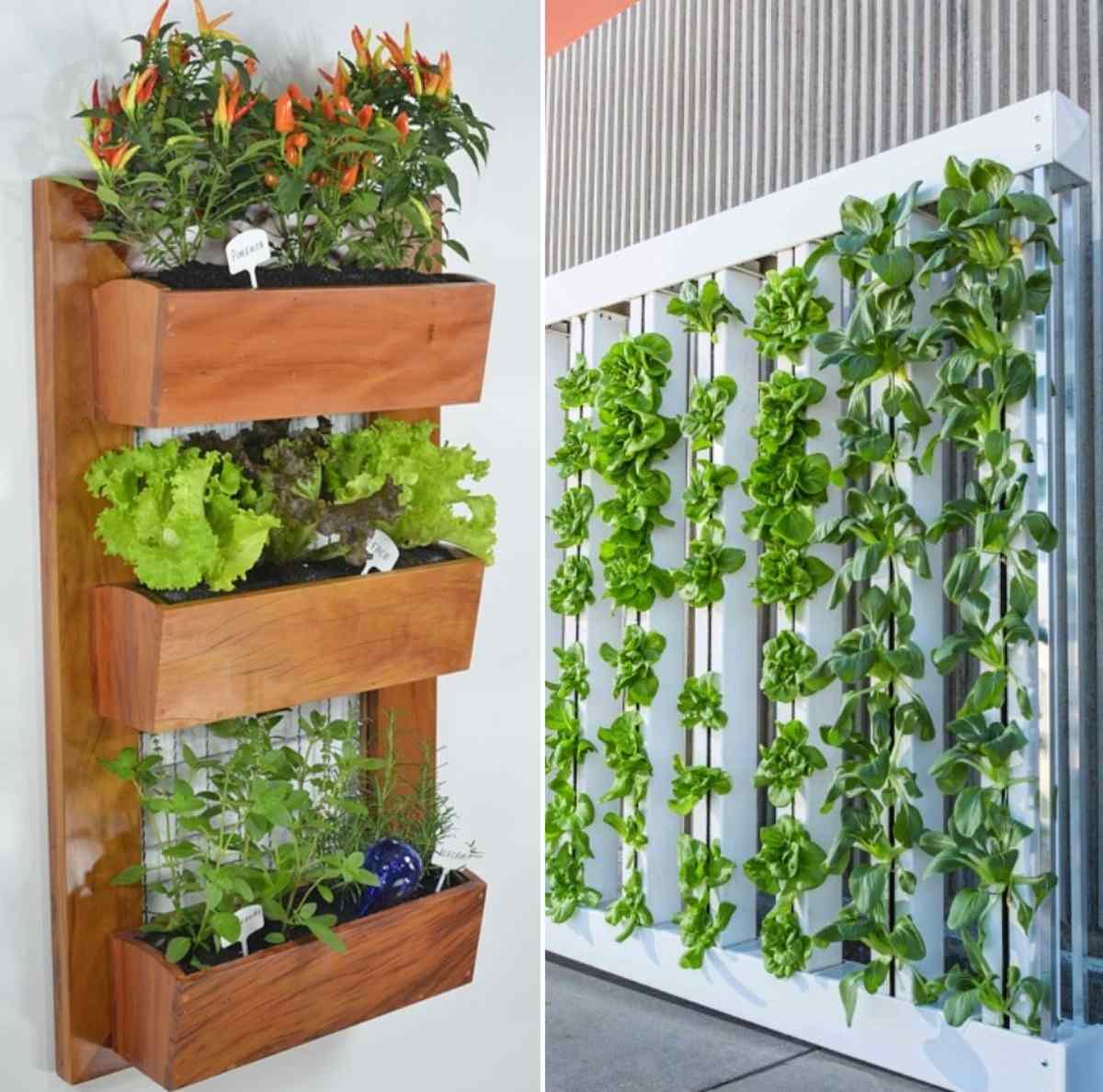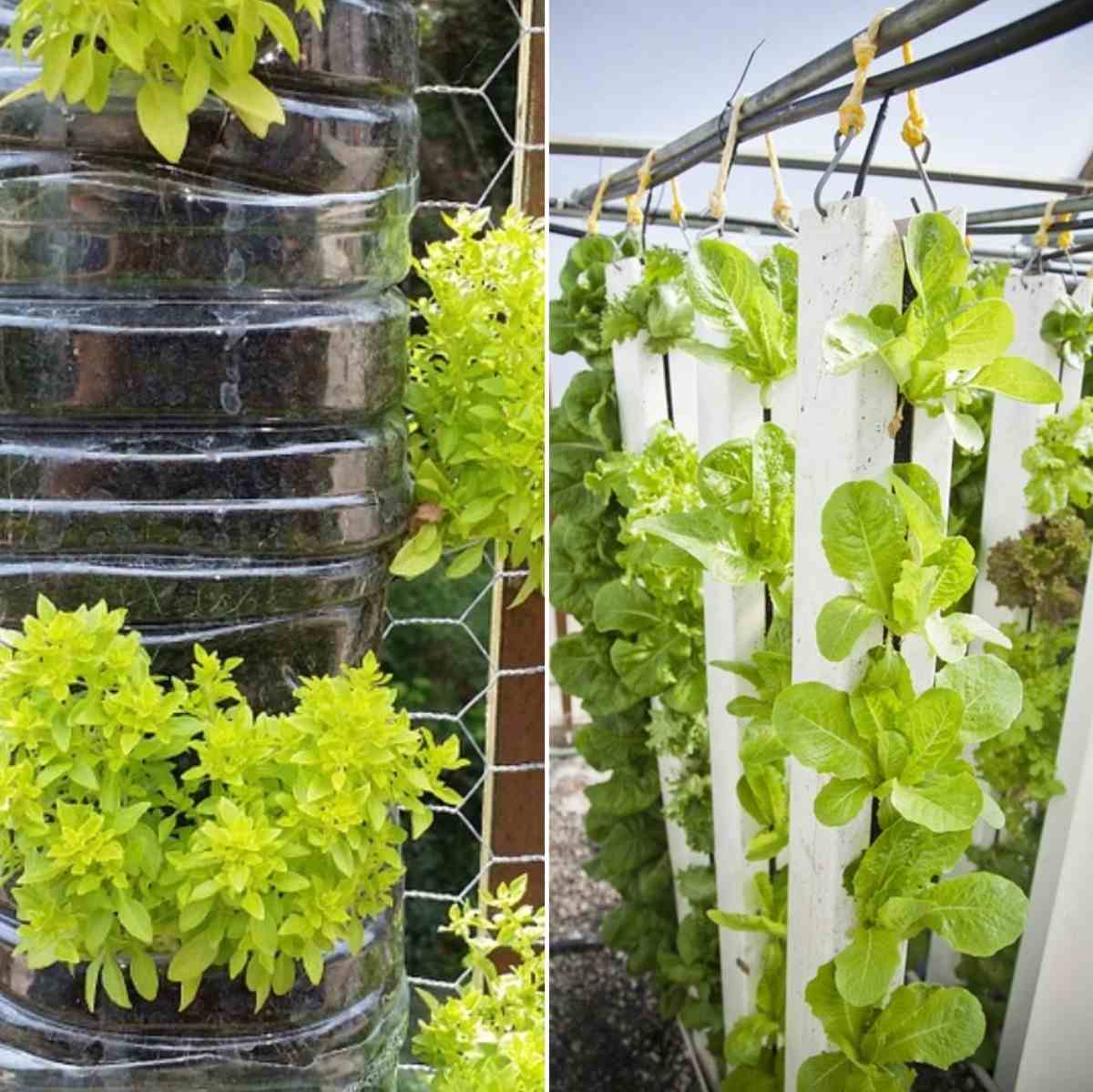Introduction: Hello Gardeners today we discuss the suitable plants for vertical gardening.Before noting down the list of plants suitable for vertical gardening first we should take a look at various advantages of vertical gardening.
A step by step guide for suitable plants for vertical gardening
Maximizes Limited Space
When you grow plants vertically, you can expand your growing space especially when it is at a premium in a very less area.
Create a Garden Room
Vertical structures generate the atmosphere of outdoor garden space. Overhead vertical garden structures also give a sense of height and depth to otherwise small gardening space.
Grow a Privacy Screen
It can help you disguise unwanted views, poking neighbours and provides the owner more privacy. For instance, grow a green wall to display a boxy air conditioner and unpleasant garden structures like sheds or compost bays.
Increase Accessibility
Plants are simpler to reach by bringing them up off the ground. Gardening vertically makes fertilizing; watering, pruning and harvesting like operations much more convenient and saves your back too.
Nurture Healthier Plants
When you raise your plants up off the ground, this improves the air circulation of the surrounding. This is a simple strategy for healthier plants and less pest or disease issues. Moreover, you can also minimize plant damage because of pets or wild animals digging up gardens on the ground.

You should not miss the Types of Cactus, Cactus Growing Tips.
Enhance Visual Appeal
It helps to improve the beauty of your garden and increase ‘curb appeal’ by adding different variety, structure, and colour. Create an appeal by planting at eye level with vertical garden structures like hanging baskets and window boxes.
Grow More Plants
You can add on to the number and variety of plants you desire to grow in your garden. Some vegetables like pumpkins that grow on vines can take up a lot of space. However, you can grow dwarf varieties up with trellis even in a very compact space. You can garden vertically with many climbers including cucumbers, tomatoes, passion fruit, and delicious melons.
Obtain a Higher Crop Yield
You can benefit from a more productive harvest of food crops by growing up and using vertical gardening techniques.
The vertical garden is a kind of modern gardening approach that enables plants to grow upward (vertically) facilitated by the use of trellis or other support systems, rather than growing on the ground (horizontally). Though there are some plants that are more productive and suit vertical gardening. But broadly speaking with a little planning and the correct materials, vertical gardens can be created that permit you to cultivate virtually anything.
Ferns
They are one of the ornamental garden plants that are preferred for their adaptability and humidity resistance. Ferns are quite easy to grow and they cover the area very quickly. There is a variety of fern that you can grow such as sword fern, blue star fern, bird’s nest fern, they are easiest to maintain. Ferns will usually grow downward, so you’ll need to cultivate with other covering plants with them too.
Bromeliads
Most bromeliads have shallow roots and they require little space to grow this makes them ideal plants for vertical gardening. Their colourful leaves and long-lasting flowers can be a good addition to your vertical garden.
You may be interested in Bonsai Tree Types, Bonsai Gardening, Bonsai Care.
Begonias
If you are hanging your living wall in a place that receives a good amount of sunlight then growing begonias is definitely a good idea.
Hostas
This beautiful plant with variegated foliage is often used as a groundcover in gardens. For a shady site, this evergreen plant is suitable for a vertical garden too.
Succulents
Succulents are the most commonly used plants for vertical gardens due to their unbelievable adaptability and resistance to fluctuation in temperatures and climatic variation. Plants such as the string of pearls, echeveria, crassula, and sedum can be considered.
Air Plants (Epiphyte)
Such plants do not require soil to thrive; they grow naturally along with other plants, which make them ideal for growing in vertical wall gardens. Tillandsias, aechmea, vriesea are the few examples.
Vines
Low maintenance vines for example golden pothos, money plants, ivies, philodendrons, rosary vine, and wandering jew can be cultivated vertical planters easily. They are low maintenance and even thrive in indirect sunlight conditions.
Star jasmine
It is an evergreen plant and can be easily trained on a trellis with beautiful fragrant flowers.
Lipstick plant
This is a beautiful cascading plant frequently found in hanging baskets and very suitable for vertical gardening.
Dracaena
Dracaenas are admired plants for the home gardens, and a majority of them grow upright with strap-like leaves giving a beautiful look.
Crotons
Croton is a colourful shrub with somewhat leathery leaves that are most colourful in bright light. In low-light conditions, new leaves will be smaller and less intensely pigmented. It is recommended to grow croton at 60 to 85 degrees F with high humidity.

You may also check the Growing Wheatgrass in Hydroponics.
Growing a Vertical Vegetable Garden
Almost any of the vegetables can be grown in a garden also works well as a container-grown vertically grown plant. Virtually any type of container can be utilized for growing vegetable plants for vertical gardens. Old washtubs, wooden crates, gallon-sized coffee cans, and even five-gallon buckets can be implemented for growing crops as long as they offer ample drainage. Shelves Since most vegetables can be easily grown in containers, shelves offer the advantage of growing numerous types of vegetables on each shelf as high up as you can reach or as much as the space permits.
You can place the vertical vegetable garden so that all of the plants receive plenty of amounts of sunlight at the same time. Although any type of shelving may be used, the best type is the kind with slats. This will permit better air circulation and during watering intervals, the surplus water on the top shelves will trickle down to the bottom ones. If shelves are not suiting well for you, containers can also be situated on tiers, forming a vertical appearance too. Alternatively, vegetables can also be grown in hanging baskets or along trellises.
Suitable Crops for Vertical Growing
Beans: Beans can be produced throughout the season (bush beans mature all at once, and then stop producing) that too with low maintenance all you need is to provide them support.
Cucumbers: Almost all varieties of cucumbers can be cultivated vertically. For convenience in handling and taking care, you can prune cucumbers to a single stem or prune them to the branches growing toward the vertical support. Cucumber grown vertically will develop longer and straighter.
Melons: All melons can be grown vertically (except watermelons because of their heavyweight) without support for the fruit. Be sure to harvest ripe melons before they slip from the stem. Melons also can be attached to the support by using a net or sling.
Peas: Peas are a desirable spring crop. Space them just 2 inches apart and train them up with any wire or a fence. When the vines dry up, substitute them with beans or squash or any other vine crop.
Summer squash: Summer squash will form fruit along the length of the vine when it is growing vertically. Tie summer squash in at about 1-foot lengths.
Tomatoes: Indeterminate or vining tomatoes that keep growing long from the tip of the vine (unlike determinate or bush tomatoes) will grow up on any vertical structure including the strings. Tomatoes are commonly grown vertically in cages or on poles as support.
Winter squash: All winter squash can be grown vertically without using the support for the better fruiting, except for the large and heavy squash.
Tha’t all folks about suitable plants for vertical gardening. Hope you enjoyed the article and keep gardening.
You may be interested in Annual and Perennial Difference.